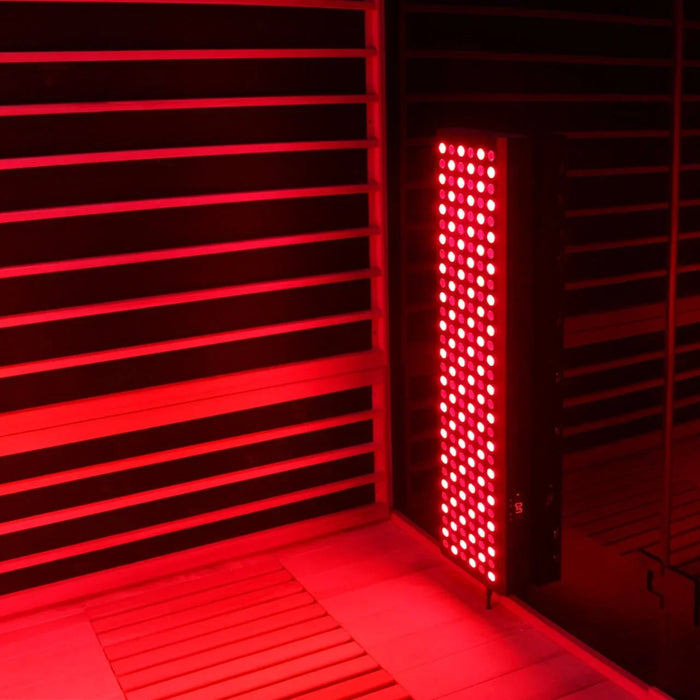When it comes to relaxation and rejuvenation, few things are as effective as the combination of a cold plunge tub and hot sauna. A cold plunge tub is a small pool of cold water that is typically kept at a temperature between 45 and 55 degrees Fahrenheit. In contrast, a hot sauna is a small, enclosed room that is heated to temperatures ranging from 160 to 200 degrees Fahrenheit.
Both the cold plunge tub and hot sauna have been used for centuries in various cultures around the world, and they are renowned for their many health benefits. The cold plunge tub can help reduce inflammation and soreness, while improving circulation and increasing energy levels. The hot sauna, on the other hand, can improve cardiovascular health, aid in detoxification, and relieve stress.
When used together, the cold plunge tub and hot sauna can enhance each other's effects, leading to even greater health benefits. This article will explore the benefits of both the cold plunge tub and hot sauna, as well as the advantages of using them in combination. By the end of this article, you will have a greater understanding of how the cold plunge tub and hot sauna combo can improve your overall health and well-being.

The Benefits of the Cold Plunge Therapy
The cold plunge tub is a small pool of cold water that is typically kept at a temperature between 45 and 55 degrees Fahrenheit. The purpose of the cold plunge tub is to immerse the body in cold water, which can have several health benefits.
The use of cold plunge tubs dates back to ancient times, where they were commonly used in Scandinavian countries as part of the sauna experience. Today, they are popular in many cultures around the world, and are often used in combination with hot saunas for maximum health benefits.
The benefits of the cold plunge tub are numerous. Firstly, it can help reduce inflammation and soreness in the body. This is because exposure to cold water causes blood vessels to constrict, reducing blood flow to affected areas and reducing swelling and inflammation.
Secondly, the cold plunge tub can also improve circulation, as the constriction of blood vessels during exposure to cold water can stimulate the cardiovascular system. This can also lead to increased energy and alertness, as the body's metabolic rate increases in response to the cold.
Several scientific studies have supported the benefits of the cold plunge tub. For example, a study published in the Journal of Strength and Conditioning Research found that immersion in cold water after exercise can help reduce muscle soreness and improve recovery time. Another study published in the Journal of Applied Physiology found that exposure to cold water can increase the body's metabolic rate, leading to increased energy expenditure.
FAQs:
-
How long should I stay in a cold plunge tub? It is recommended to start with short durations of 10-30 seconds and gradually increase the time up to 1-3 minutes. It is important to monitor your body's response to avoid hypothermia.
-
Is it safe to use a cold plunge tub after exercising? Yes, it is safe and can actually aid in muscle recovery.
-
Can cold plunge therapy help with muscle recovery? Yes, immersion in cold water can help reduce inflammation and soreness, which can aid in muscle recovery.

The Benefits of the Hot Saunas
A hot sauna is a small, enclosed room that is heated to temperatures ranging from 160 to 200 degrees Fahrenheit. The heat is typically produced by a wood-burning stove, electric stove, or infrared heaters, and the high temperatures cause the body to sweat and release toxins.
The use of hot saunas dates back to ancient times, where they were commonly used in Finnish culture as part of a weekly ritual. Today, hot saunas are popular around the world, and are often used in combination with cold plunge tubs for maximum health benefits.
The benefits of the hot sauna are numerous. Firstly, it can improve cardiovascular health, as the high temperatures cause blood vessels to dilate, increasing blood flow and lowering blood pressure. This can also lead to improved overall heart health.
Secondly, the hot sauna can aid in detoxification, as sweating helps to remove toxins from the body. This can help improve skin health and overall body function.
Finally, the hot sauna can also provide stress relief, as the heat and relaxation can promote feelings of calm and relaxation. This can lead to improved mental health and overall well-being.
Several scientific studies have supported the benefits of the hot sauna. For example, a study published in the European Journal of Preventive Cardiology found that regular sauna use was associated with a reduced risk of cardiovascular disease. Another study published in the Journal of Alternative and Complementary Medicine found that infrared sauna use can help improve skin health and reduce the signs of aging.

The Benefits of Combining the Cold Plunge Tub and Hot Sauna
Combining a cold plunge tub and hot sauna can create a powerful therapeutic experience that enhances the benefits of each. This practice, known as contrast therapy, involves alternating between periods of exposure to hot and cold temperatures.
The physiological changes that occur during this process are complex and not yet fully understood, but the benefits are significant. For example, the heat from the sauna causes blood vessels to dilate, increasing blood flow and promoting sweating, which helps to remove toxins from the body. The cold from the plunge tub, on the other hand, causes blood vessels to constrict, reducing inflammation and soreness.
The combination of these two therapies can provide numerous benefits, including enhanced detoxification, increased cardiovascular health, and improved immune system function. By increasing blood flow, promoting sweating, and boosting the immune system, contrast therapy can help improve overall body function and promote overall wellness.
Scientific studies have also supported the benefits of contrast therapy. For example, a study published in the International Journal of Circumpolar Health found that contrast therapy can improve cardiovascular health and reduce symptoms of chronic diseases like hypertension and diabetes. Another study published in the Journal of Strength and Conditioning Research found that contrast therapy can help reduce muscle soreness and inflammation following exercise.
FAQs:
-
What is the best order to use a cold plunge tub and hot sauna? The recommended order is to start with the hot sauna, followed by a cold plunge. This allows the body to adjust to the heat before being exposed to the cold, which can be shocking if done in reverse.
-
How long should I stay in each? It is recommended to stay in the hot sauna for 10-20 minutes, and in the cold plunge tub for 1-3 minutes. This can be repeated for 3-5 cycles.
-
Are there any risks associated with using both? While contrast therapy is generally considered safe for healthy individuals, there are some risks to be aware of. People with certain medical conditions, such as heart disease or Raynaud's disease, should avoid this therapy. Additionally, it is important to listen to your body and stop if you feel uncomfortable or dizzy.

How to Incorporate the Combo into Your Routine
Incorporating contrast therapy into your wellness routine can be a great way to promote overall health and wellness. However, it is important to use these therapies safely and effectively to avoid injury or discomfort.
Here are some tips for incorporating a cold plunge tub and hot sauna into your routine:
-
Start slowly: If you are new to contrast therapy, start with short sessions and gradually increase the time and intensity. This will allow your body to adjust to the temperature changes and reduce the risk of injury.
-
Stay hydrated: Drink plenty of water before and after your contrast therapy session to avoid dehydration.
-
Listen to your body: If you feel dizzy or uncomfortable at any point during your session, stop immediately.
-
Follow recommended guidelines: Stick to the recommended time and temperature guidelines for each therapy to avoid injury or discomfort.
As for how often to use the cold plunge tub and hot sauna, it is generally recommended to use them 2-3 times per week, with at least one day of rest in between sessions.
It is important to note that contrast therapy is not recommended for everyone. People with certain medical conditions, such as heart disease or Raynaud's disease, should avoid this therapy. Additionally, pregnant women and individuals with high blood pressure should consult with their healthcare provider before trying contrast therapy.

Conclusion
Incorporating a cold plunge tub and hot sauna into your wellness routine can have numerous benefits for your overall health and well-being. Combining these therapies enhances their effects, promoting improved circulation, detoxification, cardiovascular health, and immune system function.
If you are interested in trying contrast therapy for yourself, remember to start slowly, stay hydrated, and listen to your body. With consistency and patience, you can experience the benefits of these therapies for yourself.










Leave a comment